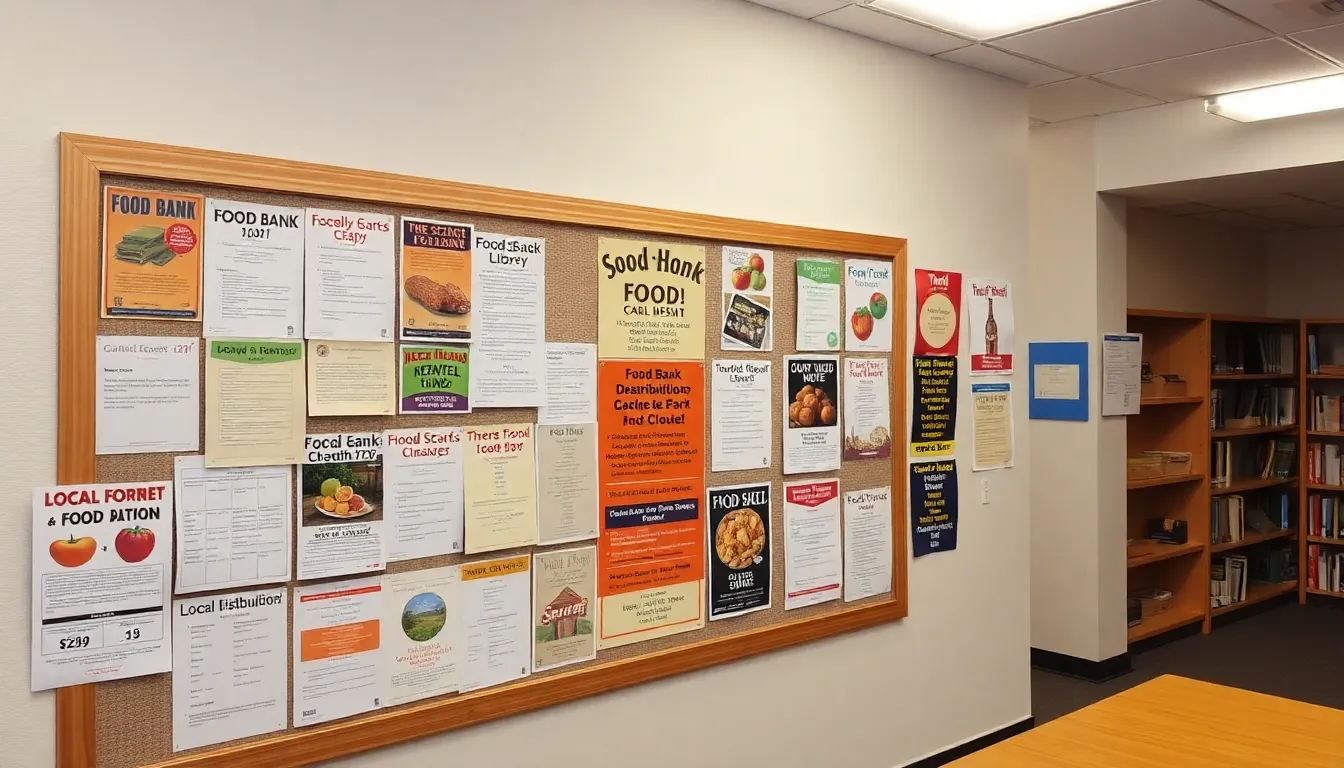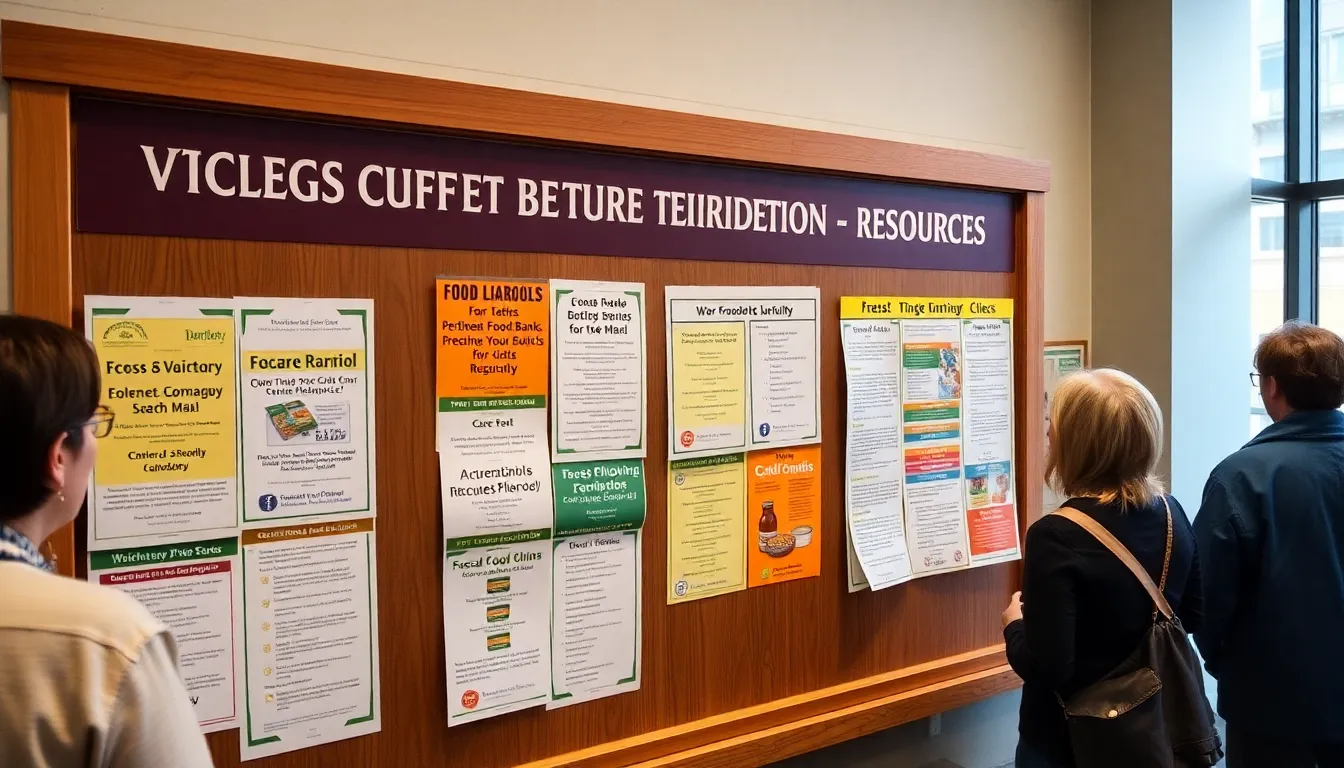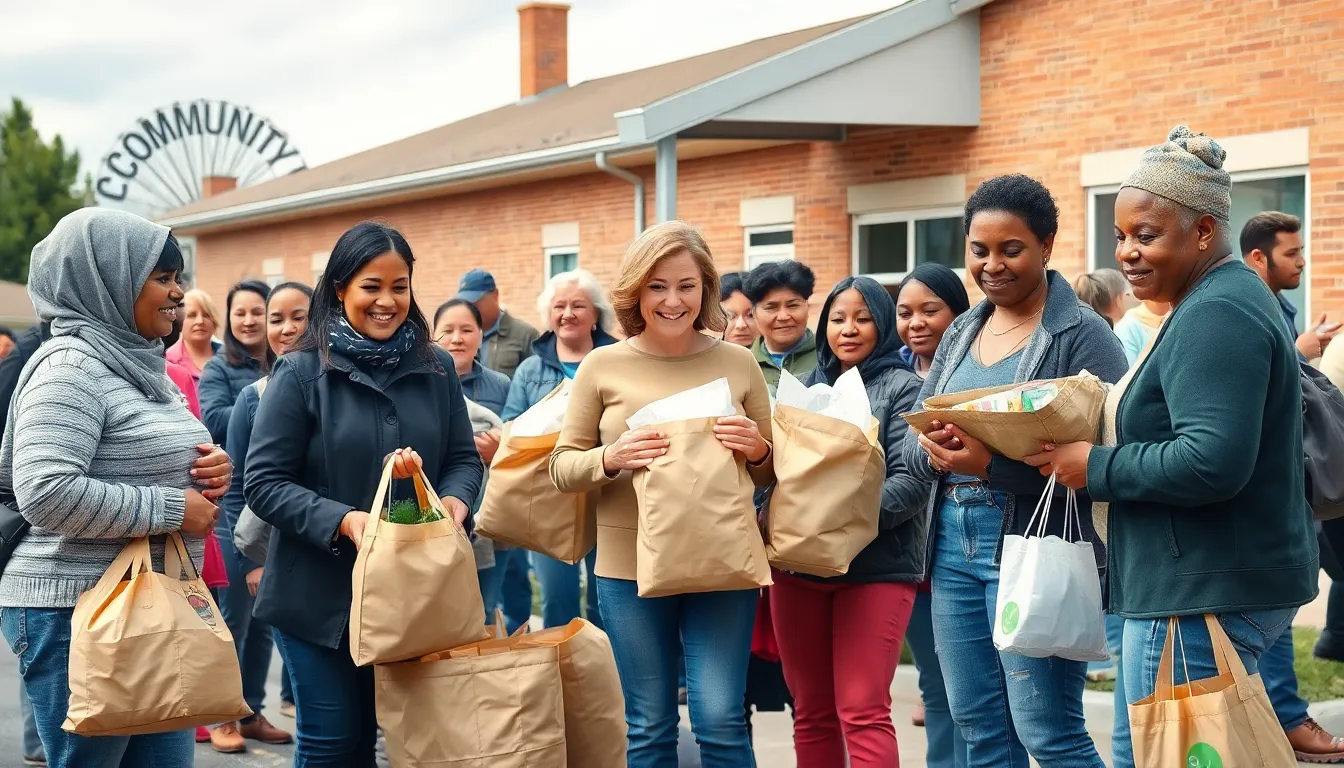Finding a reliable food bank can feel like searching for a unicorn in a haystack. But fear not! When hunger strikes, knowing where to find help is essential. Food banks are here to rescue those in need, providing nutritious meals and a sense of community.
Table of Contents
ToggleUnderstanding Food Bank Distribution Schedules
Food bank distribution schedules provide vital information on when and where to access food assistance. Awareness of these schedules helps individuals plan and ensures timely support.
Importance of Food Bank Schedules
Food bank schedules play a critical role in connecting individuals with essential nutrition. They provide clarity on distribution days and times. Knowing this information allows families to avoid hunger during challenging times. Accessing food consistently mitigates food insecurity and builds community resilience. Regular schedules can also enhance participation, as people become familiar with consistent timing. Increased awareness leads to improved access for those in need.
Common Distribution Formats
Various formats exist for food bank distributions, meeting diverse community needs. Drive-through distributions enable participants to receive food without leaving their vehicles. Traditional walk-in services allow individuals to select their items, fostering choice and dignity. Mobile pantries address accessibility issues by bringing food to neighborhoods. Some food banks partner with local organizations to expand outreach. These partnerships make it easier for families to receive assistance in convenient locations. Flexible formats ensure food distribution is approachable for all community members.
Finding Food Banks Near You


Locating food banks nearby involves utilizing various resources. Several platforms provide information about distribution schedules and locations.
Online Resources
Online tools serve as reliable sources for food bank information. Websites like Feeding America offer searchable databases that list food banks by zip code. These resources frequently update their schedules and services. Many food banks also maintain social media profiles. Checking these pages helps individuals stay informed about distribution times and special events. Local government websites may feature additional resources like links to community programs and food assistance services.
Local Community Boards
Community boards provide vital information about food bank availability. Local bulletin boards, often found in libraries and community centers, list upcoming food distributions. Residents frequently post updates on food drives and local assistance programs. Engaging with community organizations can lead to valuable insights about nearby food bank services. Neighborhood groups on platforms like Facebook may share real-time information about pantries and meal distributions. Networking within local circles enhances the chances of finding timely help.
How to Access Food Bank Services
Accessing food bank services involves understanding eligibility requirements and the application process. Individuals seeking assistance can follow specific steps to ensure they receive the help needed.
Eligibility Requirements
Eligibility for food bank services typically depends on income level and family size. Many food banks operate under guidelines established by federal and state assistance programs. Documentation like proof of income, identification, and residency may be required during the application. Some food banks offer assistance without extensive documentation. Knowing specific requirements for each food bank can streamline the process and ensure familiarity with what needs to be provided.
Application Process
Applying for food bank services often starts with a simple online form or phone call. Individuals can visit food bank websites to find up-to-date information on distribution schedules and applications. Some food banks allow walk-in appointments without prior registration. Filling out the application might include providing personal information and any necessary documentation. After completing the application, confirmation of eligibility typically follows promptly, allowing individuals to access services without delay.
Tips for Maximizing Your Food Bank Visit
Maximizing a food bank visit ensures a smooth experience and effective access to resources. Various strategies enhance preparation and awareness.
Preparing for Your Visit
Familiarize with the food bank’s distribution schedule first. Knowing the specific days and hours allows for timely arrivals. Gather necessary documentation as well, such as identification and proof of income. Some food banks request minimal information, but being prepared helps expedite the process. Understand the types of food offered and any specific dietary needs. Calling ahead can clarify items available during the visit. Consider arriving early to avoid long lines; this increases chances of receiving preferred food options.
What to Expect at the Distribution Site
Expect a welcoming environment at the distribution site. Volunteers and staff often provide assistance and guidance through the process. Individuals typically check in upon arrival, presenting required documentation. Distribution formats vary, from pre-packed bags to choices in a pantry-style setting. Many sites allow for social distancing and safety measures, ensuring comfort. After receiving food, find a space to organize items if needed. Respectful interactions with volunteers and fellow visitors create a positive atmosphere.





